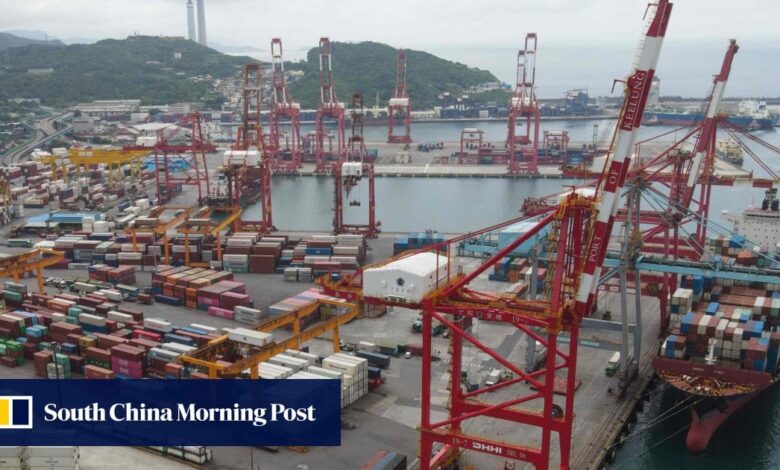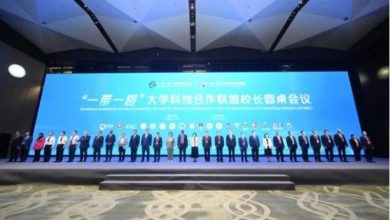Taiwan reports 13th straight month of export order decline, world economy blamed

[ad_1]
Orders for exports fell 15.6 per cent last month compared to September 2022, the Ministry of Economic Affairs announced, for a total value of US$51.4 billion.
“Slackened external demand, poor order visibility amidst global economic uncertainty and inventory destocking along the supply chain continue to weigh on export orders to Taiwan,” said George Xu, director of Asia-Pacific sovereign ratings with Fitch Ratings.
Commitments from offshore plummeted without the brisk purchases of PCs and smartphones for telework and home study made during the pandemic. The end of that cycle left many of Taiwan’s tech firms, including its signature chip makers, with excess inventory in late 2022 and early 2023.
Hi-tech comprises about 30 per cent of Taiwan’s US$820 billion-plus economy, and the island supplies three out of five of the world’s semiconductor chips, particularly the most advanced units.
The US real economy will grow by a mild 2.2 per cent this year and just 0.8 per cent in 2024, research organisation The Conference Board has forecast. The European Commission places EU-area economic growth at 0.8 per cent, year on year, in 2023.
Mainland China’s GDP is widely expected to reach about 5 per cent this year compared to 2022 as it grapples with a property crisis and youth unemployment.
Taiwan is not ‘hollowing out’ as computer chips head to US, AmCham says
Taiwan is not ‘hollowing out’ as computer chips head to US, AmCham says
In September this year compared to last, ministry data shows that Europe pulled back more sharply than any other region – 46.5 per cent – on orders from Taiwan. The United States tapered by 16.1 per cent but remained Taiwan’s largest market last month at US$16.65 billion in orders.
Commitments from mainland China and Hong Kong as a single market fell year on year by 1.6 per cent, according to ministry data. Goods shipped from Taiwan to mainland China are often assembled there for re-export.
Purchase orders of Taiwan’s consumer electronics, the top category with US$17.21 billion of value in September, sank 16.7 per cent year on year. Orders for information and communication products contracted by 19.2 per cent to US$16.45 billion.
Global sales of smartphones fell 8 per cent year on year in the third quarter, market research firm Counterpoint said on Tuesday.
Taiwan’s actual exports, however, posted their first gains in 13 months in September due to growing demand for semiconductor chips linked to AI. Exports rose 3.4 per cent last month, year on year, to US$38.81 billion.
Analysts say that figure augurs a slow turnaround in Taiwan’s offshore markets for hi-tech hardware.
The bank HSBC pointed to “huge demand for AI semiconductor chips” in a research note on Friday.
AI chips for new devices are in use and they’re not going to stop
And S&P Global Market Intelligence said in an October 13 commentary that Taiwan’s “medium-term outlook remains for sustained positive expansion at a moderate pace” because of likely global demand for electronics next year and into 2025.
S&P pointed specifically to AI-related servers, graphics cards, and chips that support generative AI as sources of growth, adding that parts for 5G mobile phones will offer further support.
“It’s a cyclical thing, the inventory and overstocking,” said Woods Chen, head of macroeconomics at Yuanta Securities in Taipei. “It’s slowly getting better. AI chips for new devices are in use and they’re not going to stop.”
[ad_2]
Source link






